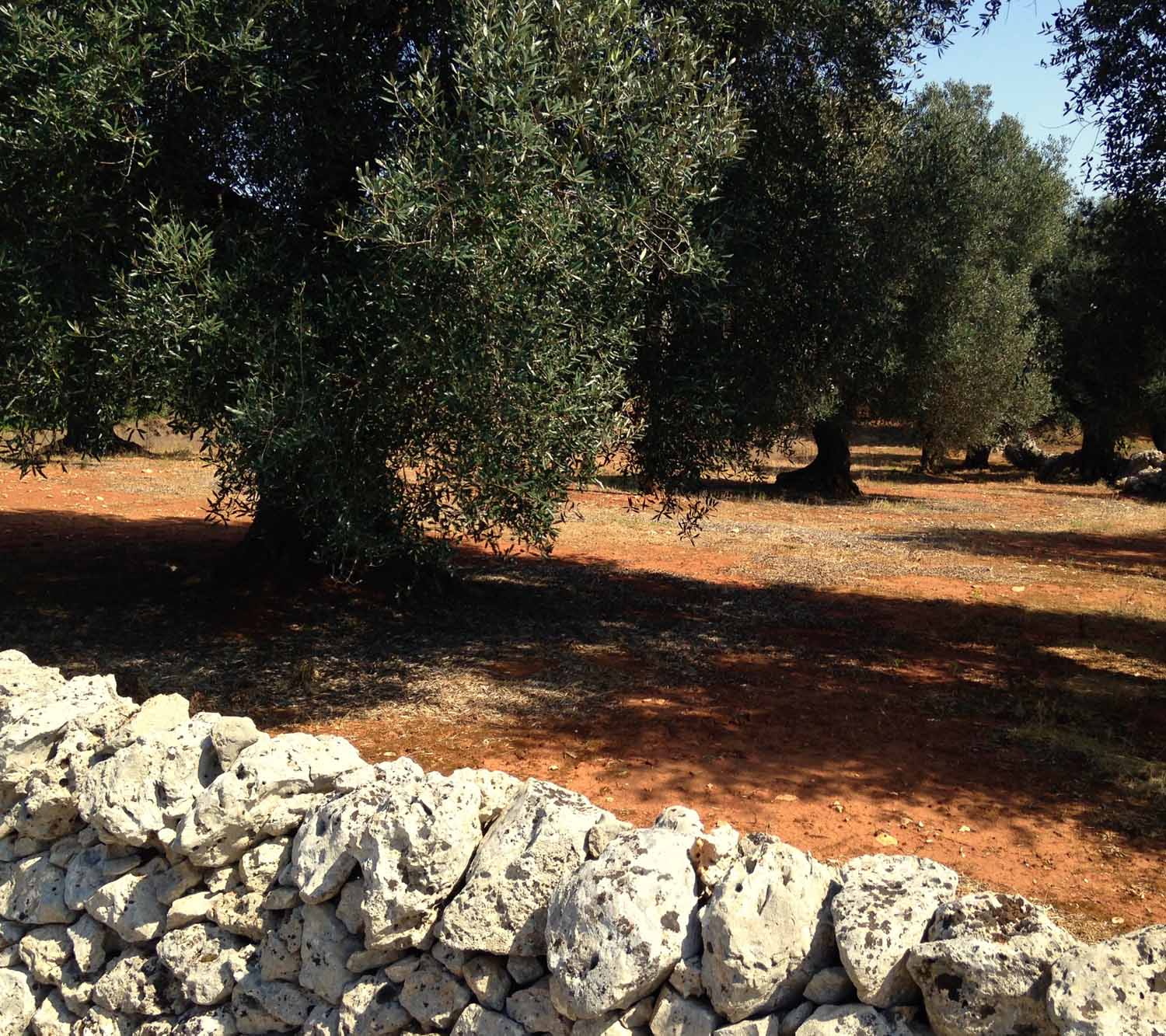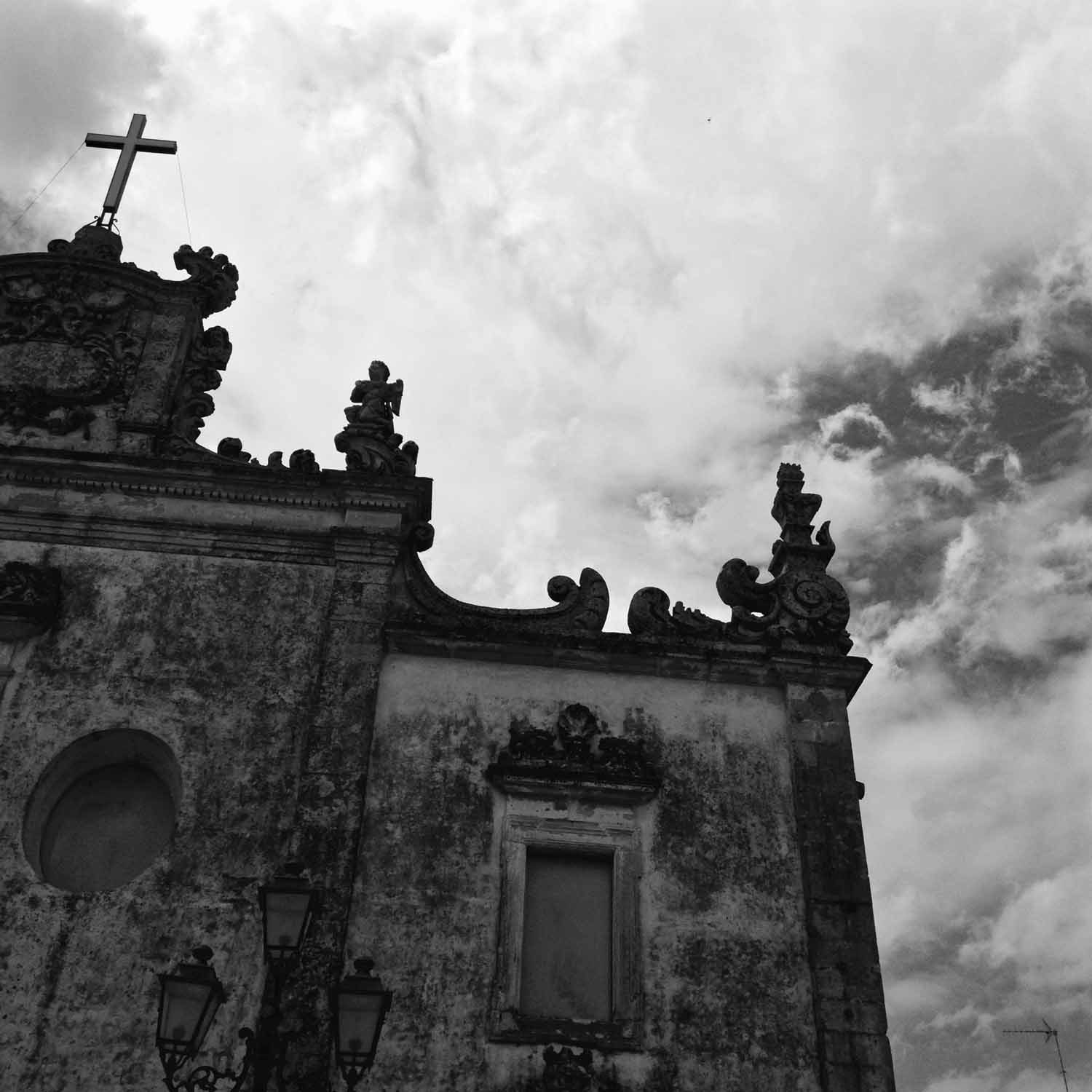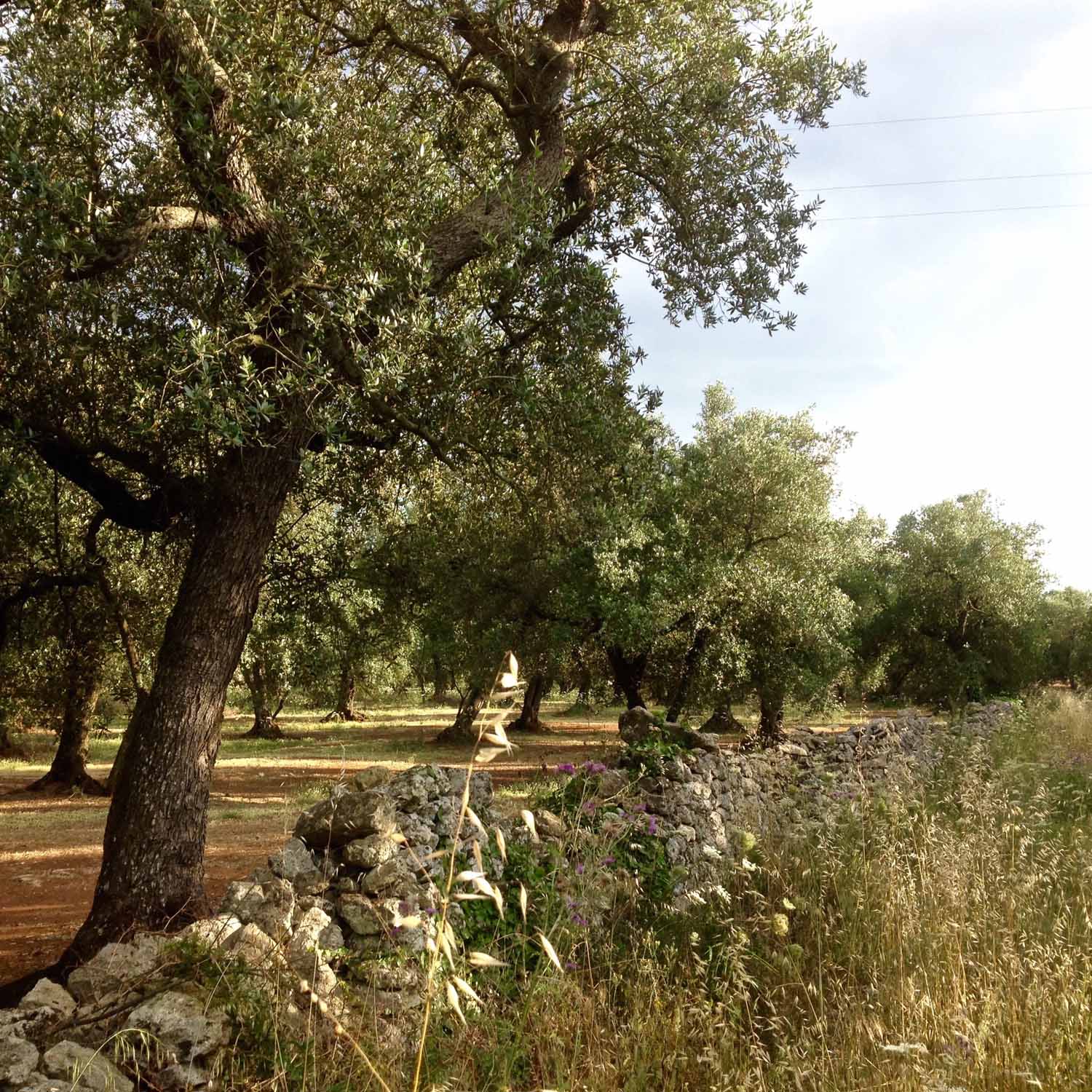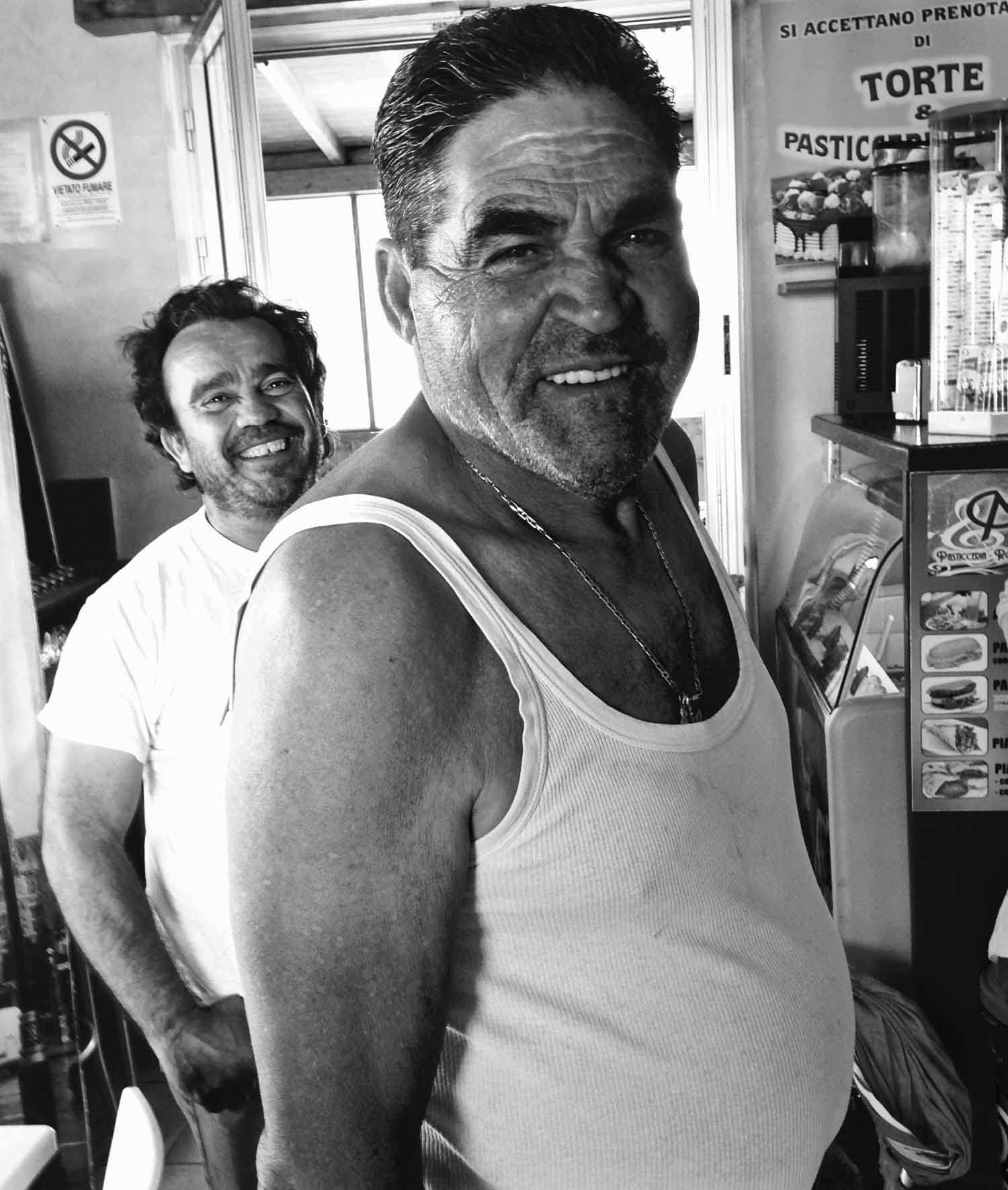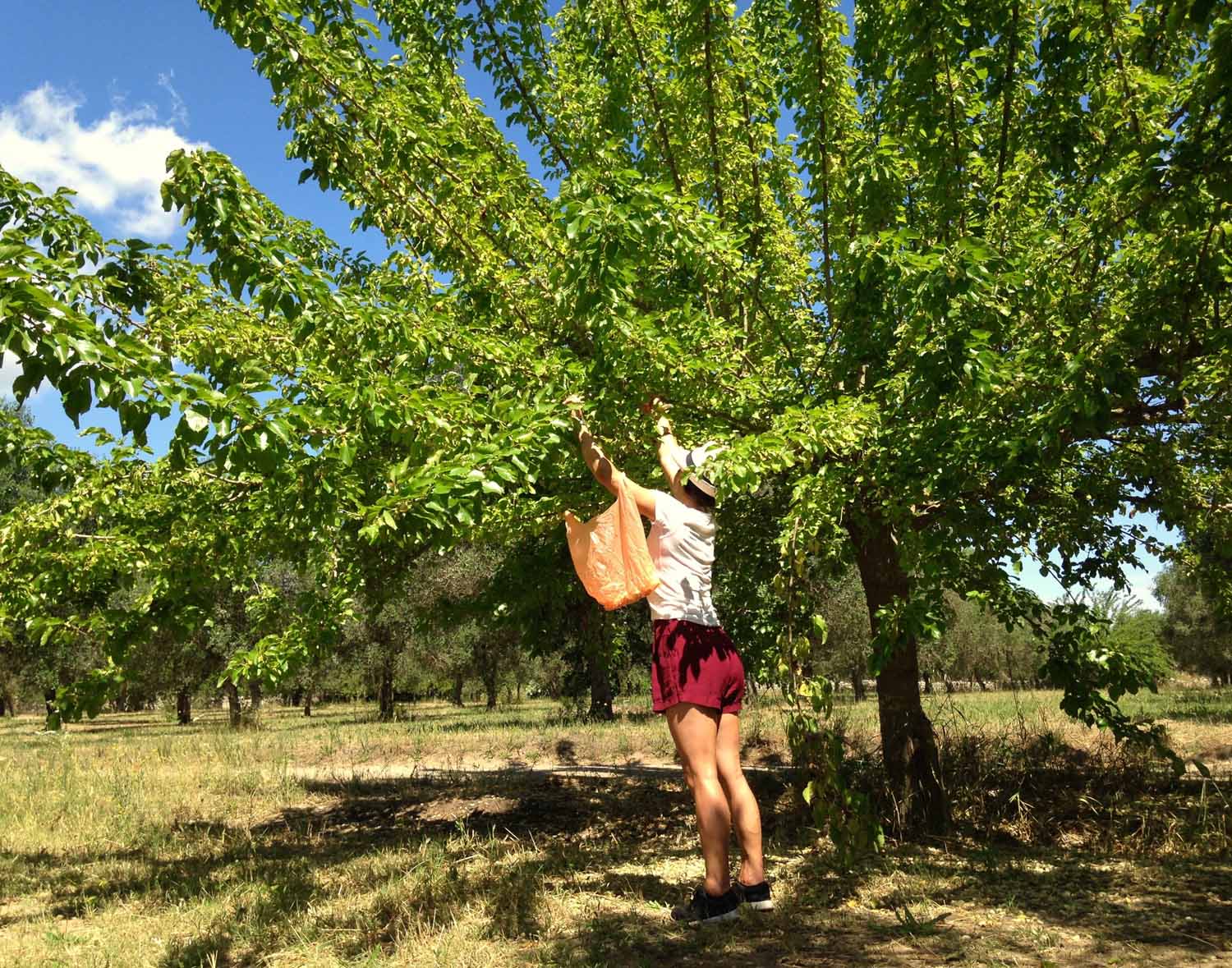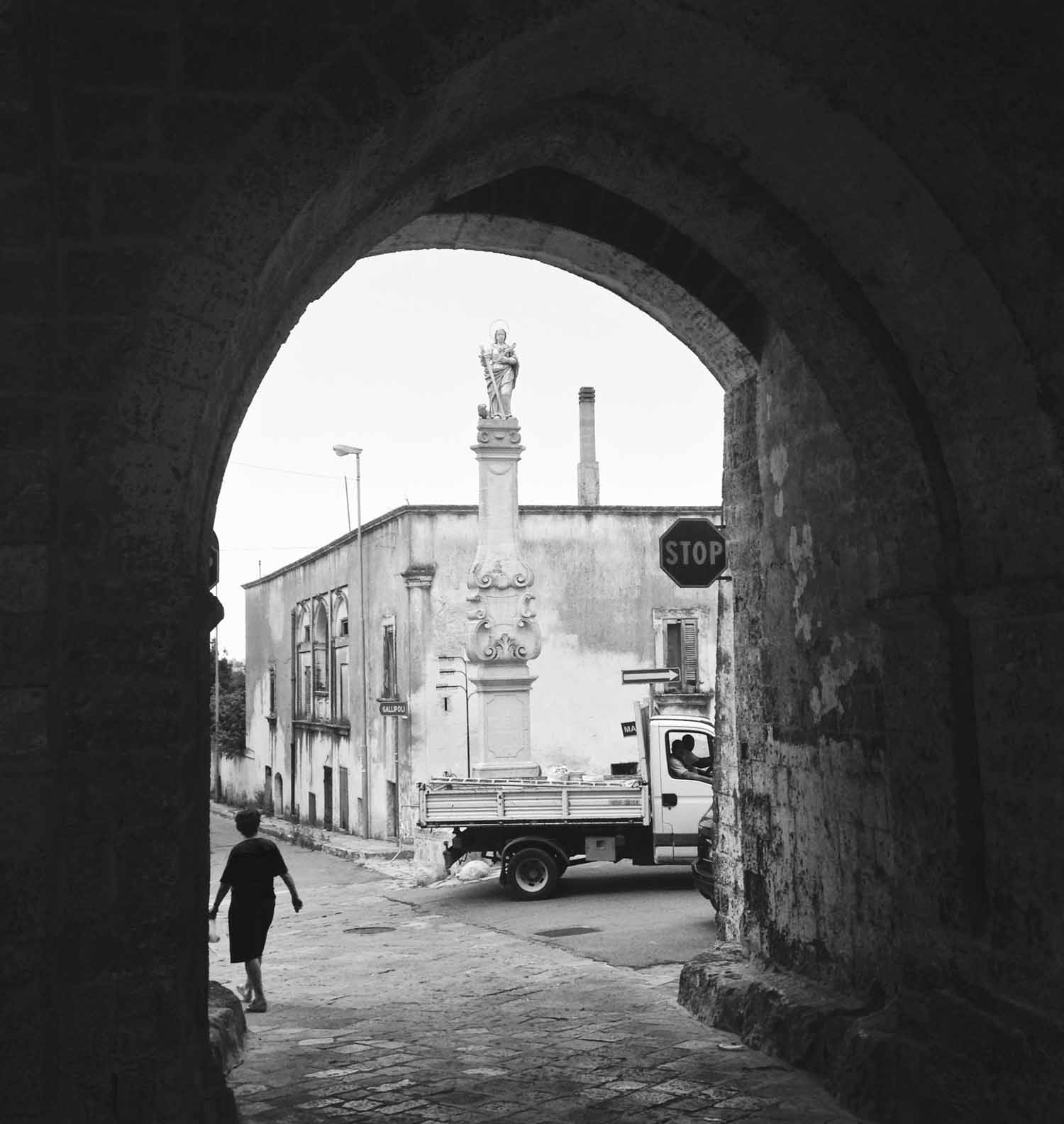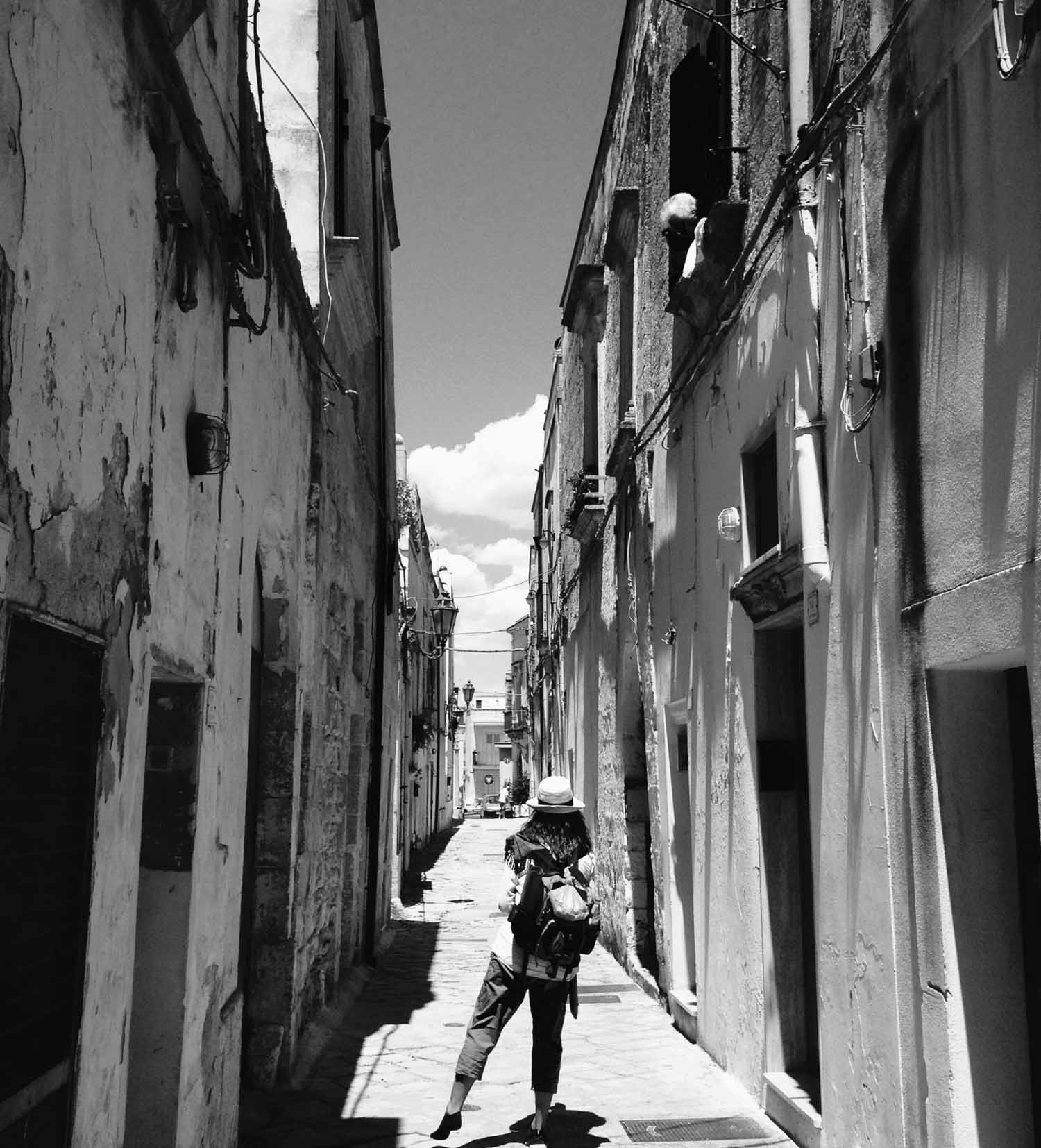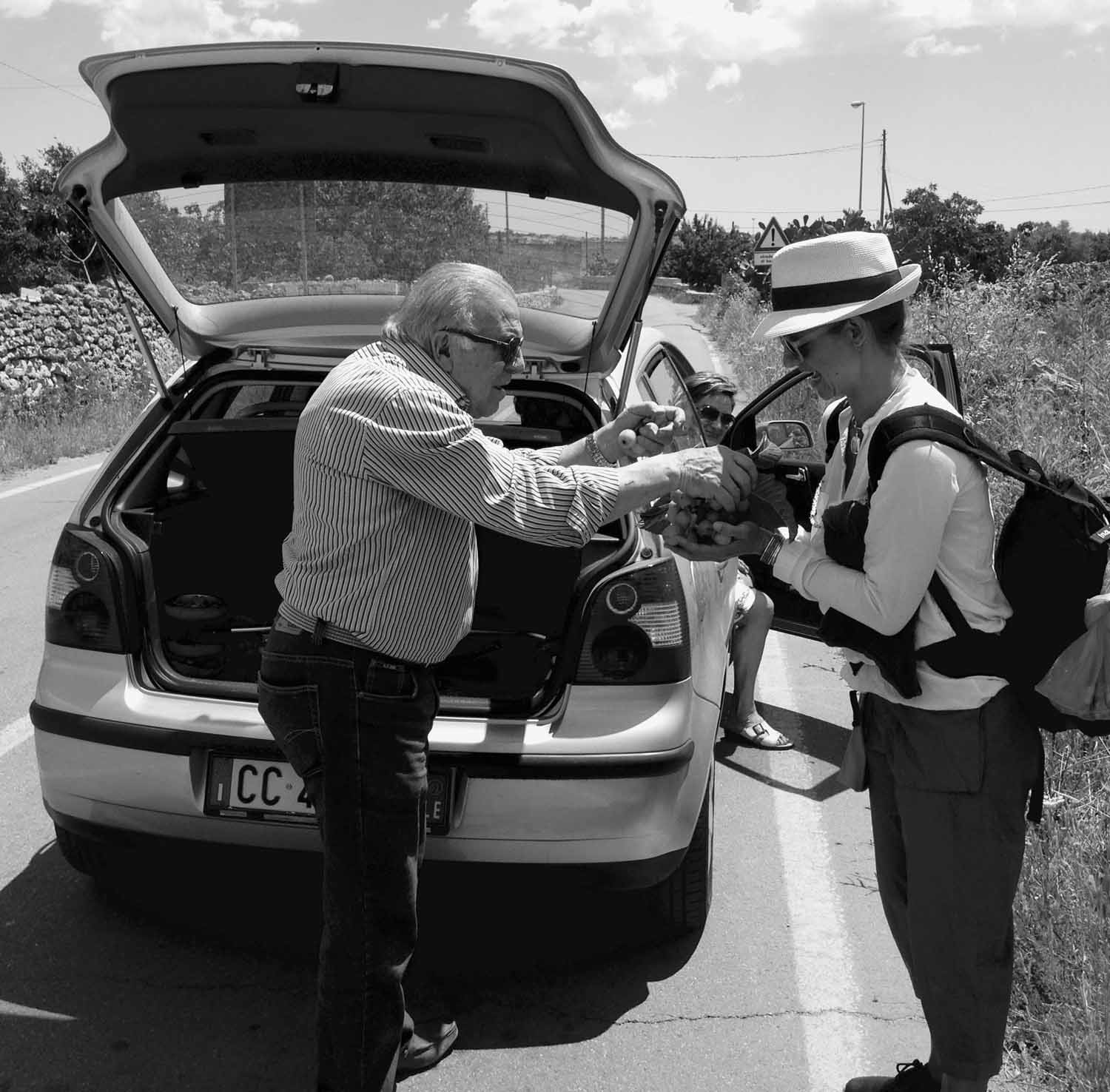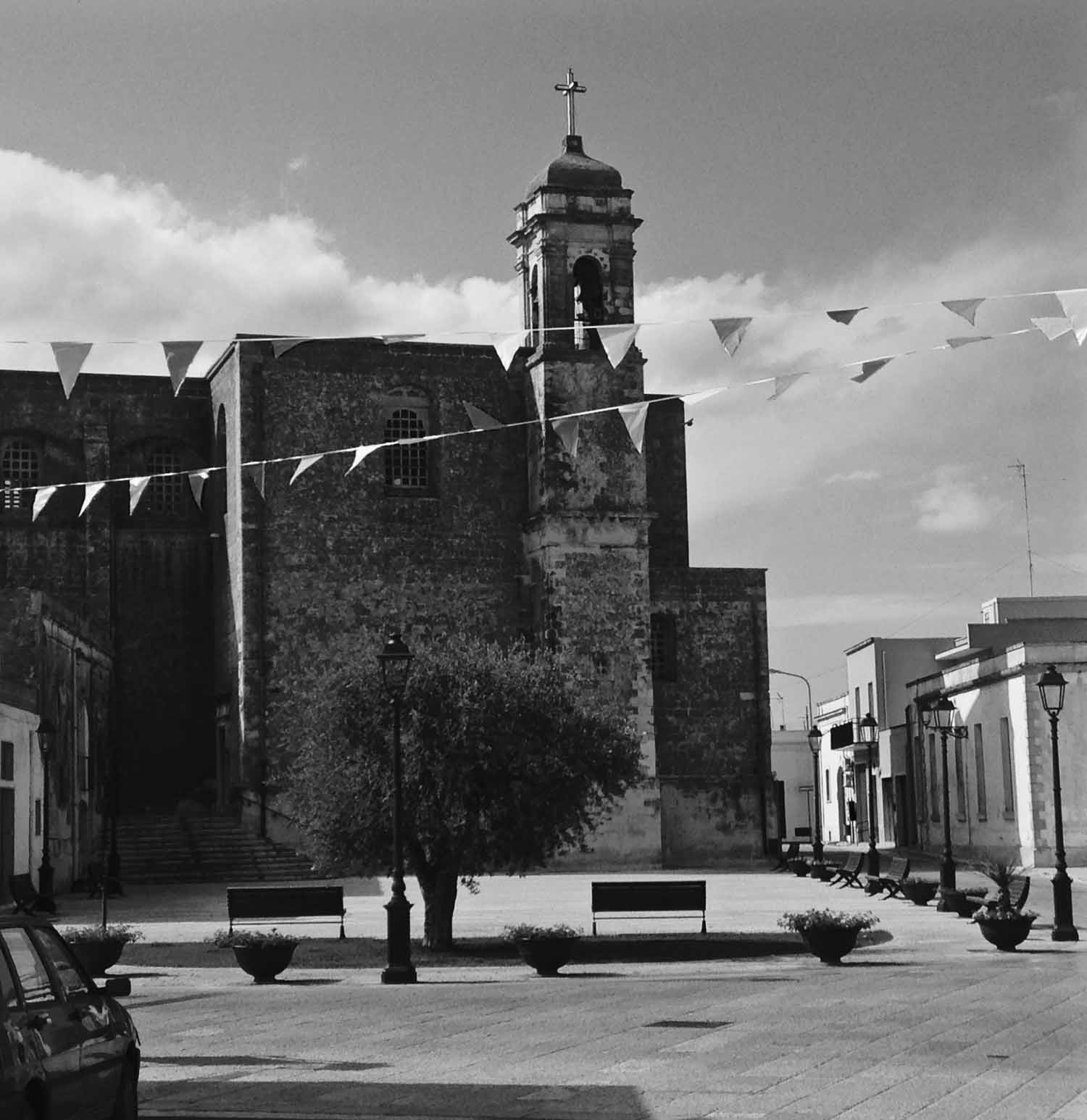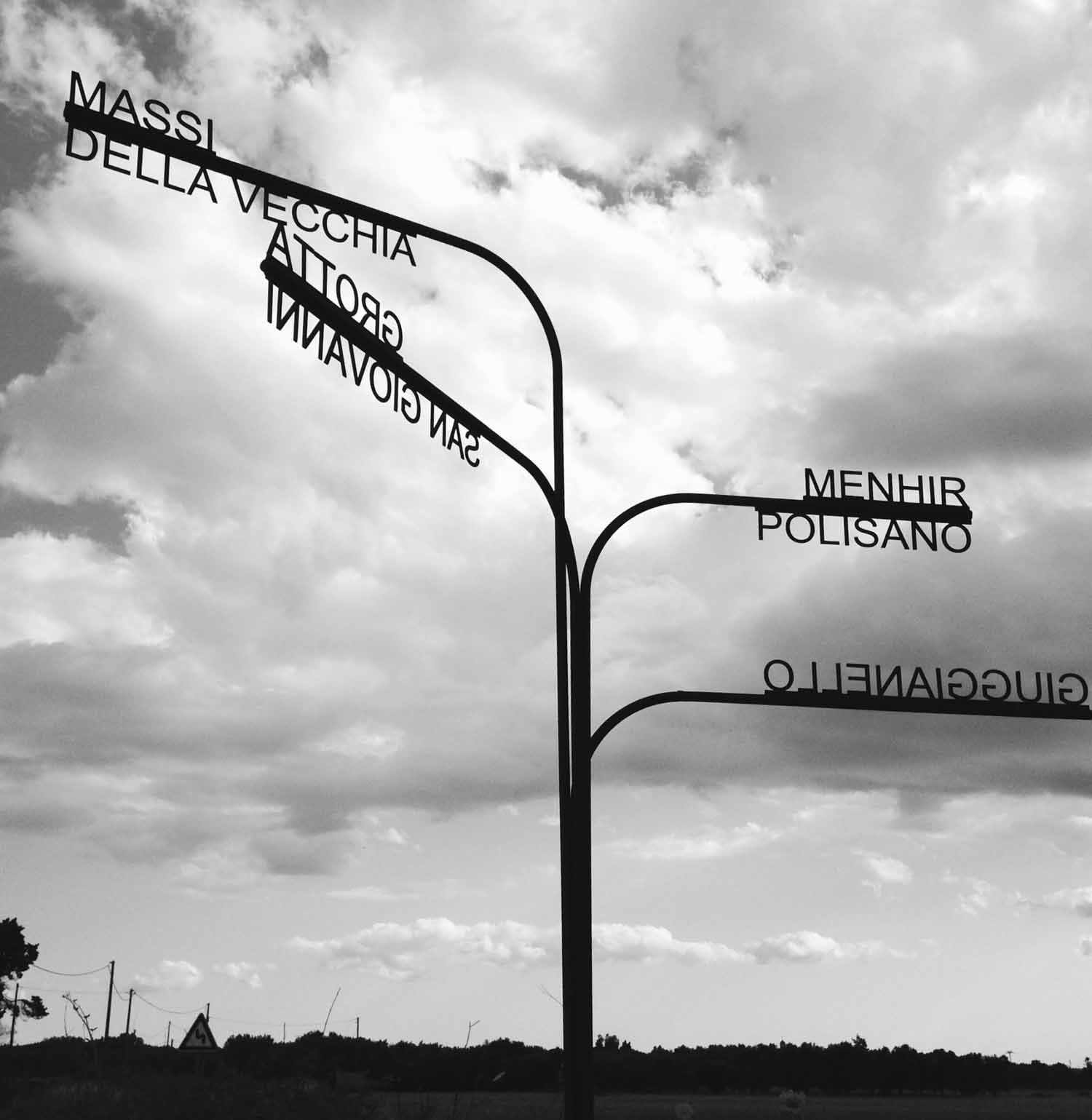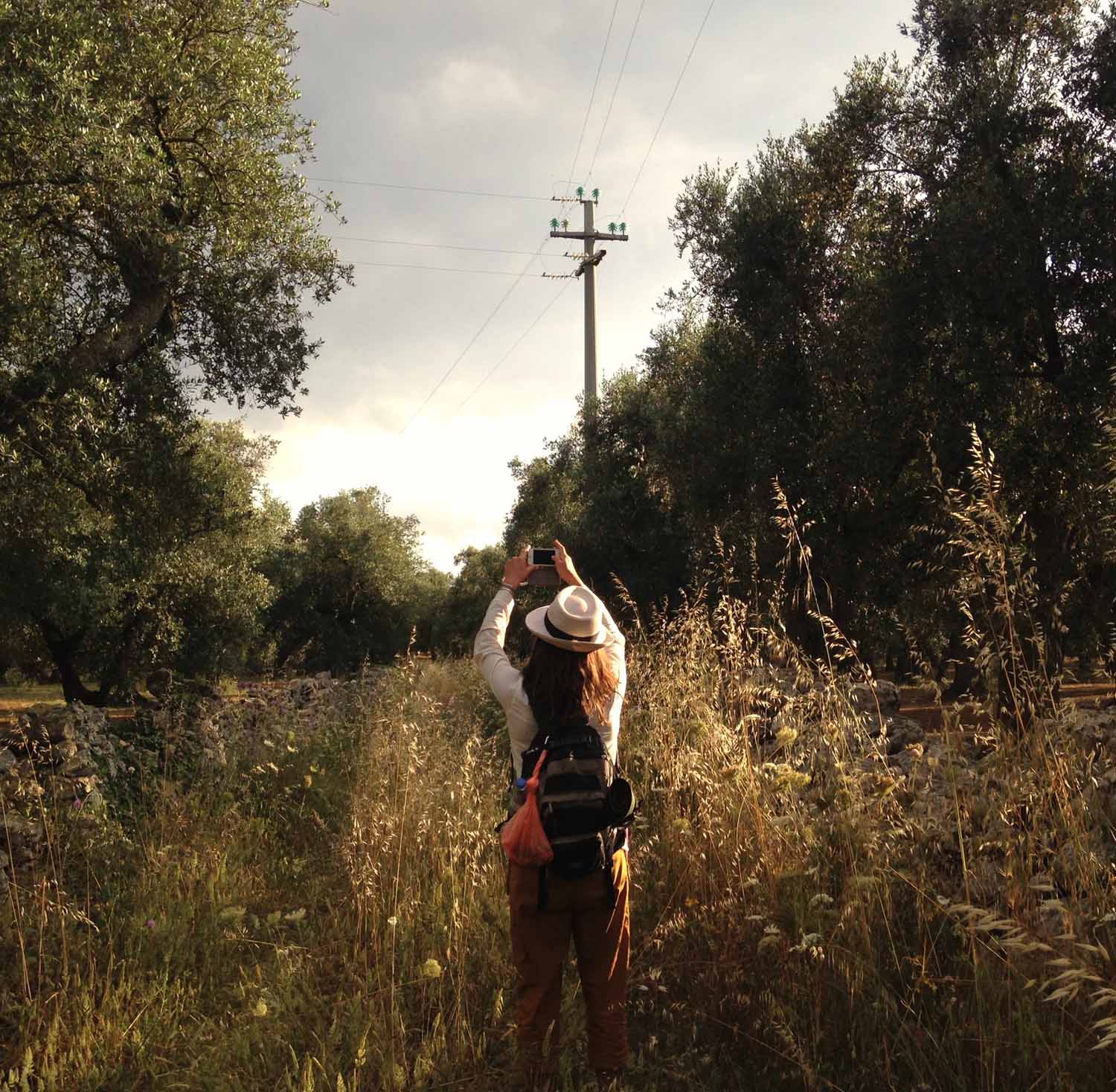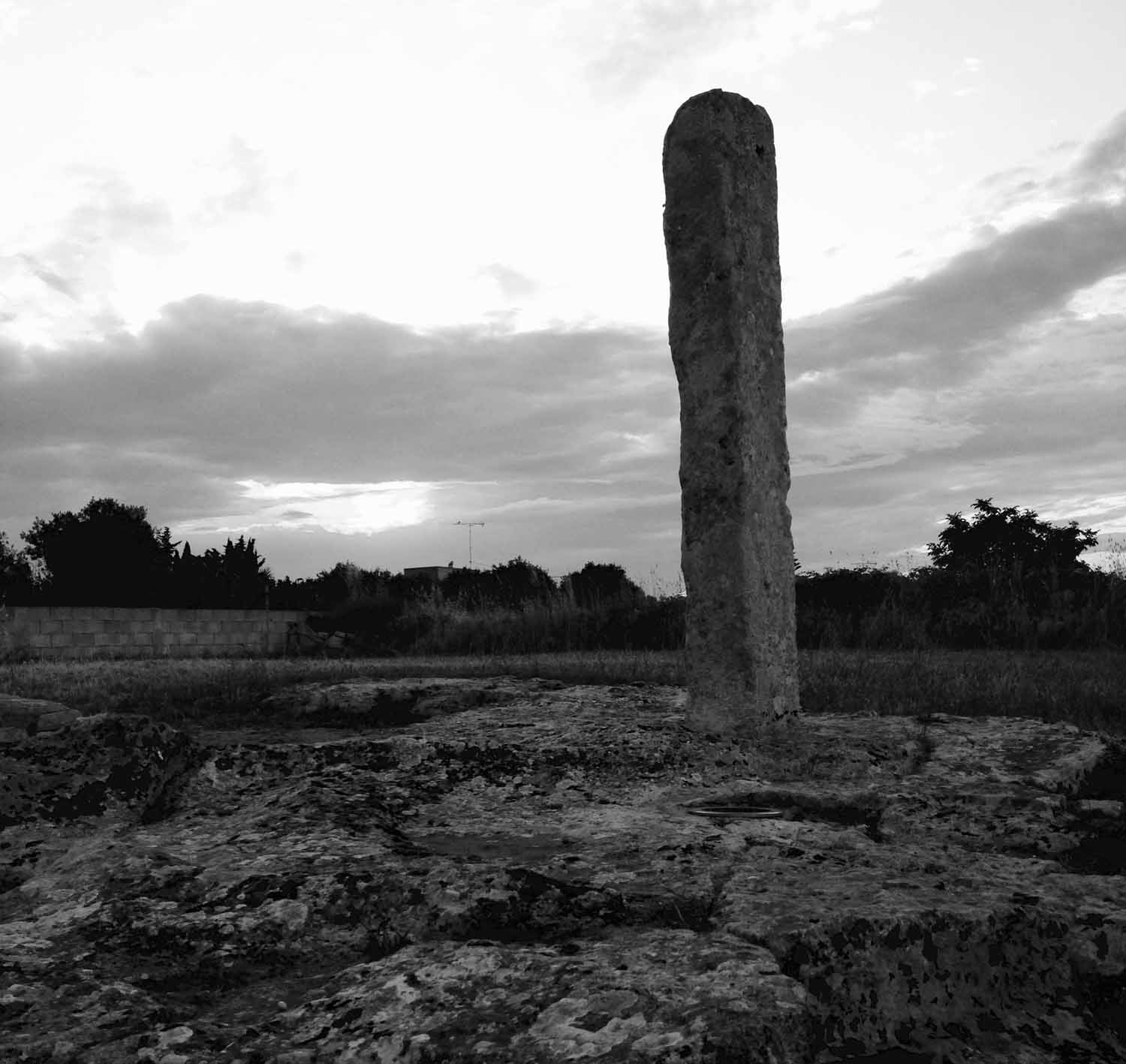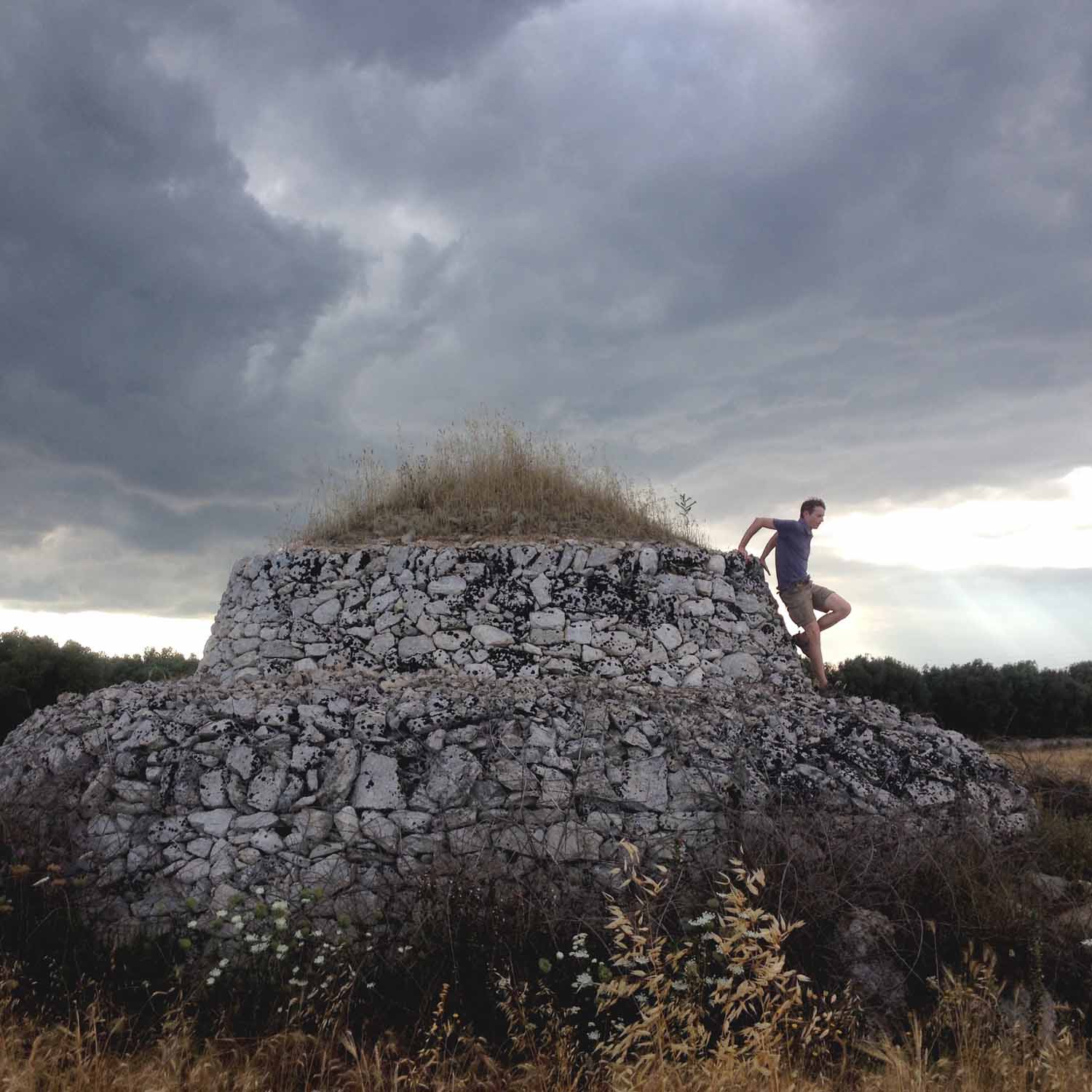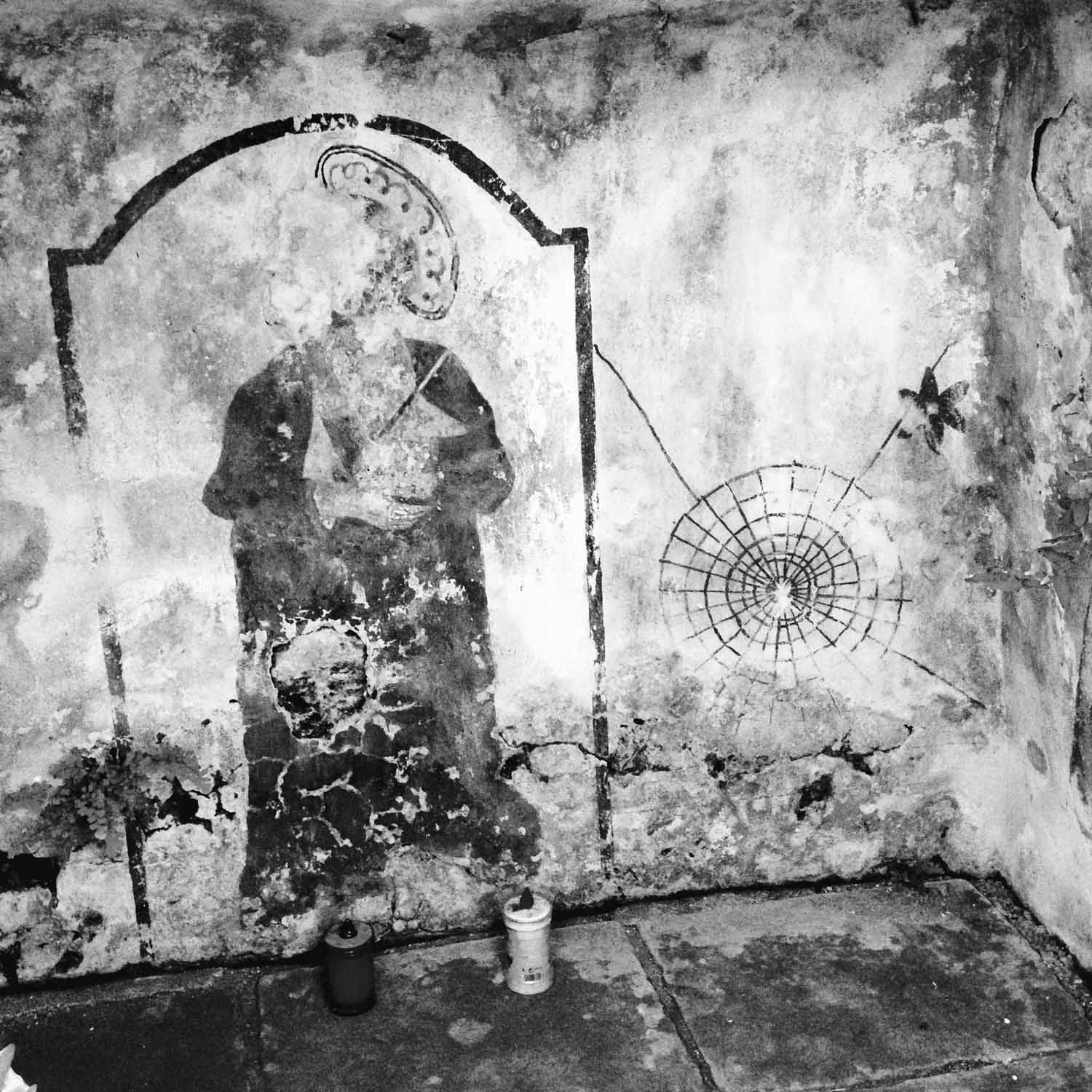The Amazonia of Olives [Day 3]
by Rudston Steward
t 9 am the sun was a fierce disk propped low in the sky, foreboding-yellow. We set out down the B&B’s driveway and within minutes were among the olives.
For the next eleven hours our trail would weave in and out of an apparently endless succession of groves, occupying every available inch of land separating one town from the next. Scorrano, Sanarica, Giuggianello, Giurdignano: an accretion of urban centres strung out in a ragged east-northeastern line across the Salento interior. Off-white isles of stone and stucco floating in a vast sea of dappled olive-green. We walked the line all day, tacking back and forth like wayward foot-sailors to keep our bearing, as if navigating an invisible Puglian waterway coursing erratically towards Otranto and the Adriatic.
There are about 60 million olive trees in Puglia. The region is Italy’s largest olive oil producer by far, accounting for 40% of the national output—a figure which dwarfs, for example, the roughly 3% produced in Tuscany. Traditionally associated with lower-grade oil, Puglian farmers are increasingly producing high-quality extra-virgin olive oils, mostly from the Ogliarola, Coratina, and Cellina varieties. Ogliarola olives predominate in the Salento—over 50,000 hectares in Lecce province alone. The trees are large, up to fifteen or twenty meters high, yielding a fruity, lime-golden oil, bittersweet and fragrant as an almond blossom.
For three hours straight we walked between and beside and under and around and over olive trees. We saw no-one else, not a car passed. It was as if we’d stumbled into a strange orderly wilderness. Somewhere remote and wild, but one that, counterintuitively, had naturally evolved in neat monocultural rows and plots: tidy demarcations of vegetation surging across the plains of Puglia. Some groves were kept free of undergrowth and grass, the soil tilled and cleared, the olives pruned with topiary precision. Others were unkempt: brambles hooked into trunks and scrambled up onto the boughs, grass climbed to shoulder-height inhibiting our passage, the trees left unpruned, shambolic with unchecked growth.
OFF-WHITE ISLES OF STONE AND STUCCO FLOATING IN A VAST SEA OF DAPPLED OLIVE-GREEN.
Walking for long uninterrupted spells through forests can be hypnotic. The Amazonia of Olives we were traversing was no exception: I settled in, my stride became languid and shady, thoughts shimmered away like windswept foliage. My footfall tapped out a rootsy rhythm; gradually I walked myself into a deep arboreal trance.
I tried for a while to count the myriad trees, to estimate how many we’d pass today, what fraction of the sixty million. Soon I lost track and gave up. It was too distracting: every individual tree seemed intent on engaging me in conversation as I walked on by. These olives steadfastly refused to sit down and be counted, to be reduced to statistics.
Around noon we emerged onto a main road and turned along it towards Scorrano. The Salento is a dense network of smallish towns and hamlets, some little more than half a dozen houses huddled around a dusty piazza. Scorrano is larger. We passed under a vaulted archway into the old city center, its whitewashed palazzi towering over flagstone alleys spanned by taut laundry lines. Garments flapped brightly overhead like bunting.
Lunchtime in Salento: everything was closed, including all the churches. Scorrano boasts a disproportionate number of churches for its size, attesting to its wealthy past under the Bourbon kings of Naples. We strolled past the curlicued Baroque facade of the Church of St Francis of Assisi, noted its fine stonework, paused in its shadow to apply another layer of suncream. Our reflections flashed from the window of a hair salon called “Cuts for Kings”—were they hoping to spearhead a revival of the Bourbon golden age? We continued on out of town, east-northeast.
We now had to cross the SS275, a major road. Highways and railways are to modern long-range walkers what rivers were to medieval pilgrims: major obstacles that must be forded at specific places. They sometimes require long detours in order to arrive at the designated bridge or strategic crossing point. Rather than embark on a lengthy slog to the nearest overpass we decided to wait for a lull in the traffic and then hightail it over the highway. I threw caution to the wind, picked my gap and sprinted across, squeezing between two converging streams of rapidly oncoming traffic. Blaspheming and cursing my overstuffed backpack at every step. I resolved to make the long slog next time round, to ford the river at the bridge like a proper law-abiding god-fearing Puglian pilgrim.
THE SUN HAD REACHED ITS CAUSTIC APEX, INTENT ON MELTING THE REST OF THE AFTERNOON INTO AN IMPRESSIONISTIC HAZE FROM ON HIGH.
The sun had reached its caustic apex, intent on melting the rest of the afternoon into an impressionistic haze from on high.
A car passed us on the road, pulled over and backed up. The driver got out, slicked-back grey hair and chic sunglasses, reached into his boot conspiratorially, and summarily handed Nadia an armful of medlars. “We’ve just picked them from the tree on our plot.” The medlar leaves crinkled and rustled like a papyrus crisp packet. He got back in the car, waving as he implored us to eat: “Mangiate, mangiate!”
We stopped for our picnic beneath an exceptionally gnarled and ancient olive, its hollowed-out trunk so large you could climb right into it and disappear. Later we stretched out and slept in its resuscitative shade, under a cascade of liquid chirping—a flock of European Bee-Eaters was gyrating high above the canopy, unseen.
We reached Sanarica in dire need of an espresso, asked a man in the piazza where the closest open bar was. He laughed, pointed south, and said “Three kilometers out of town.” We thanked him, saying we’d skip the six kilometer roundtrip, given that we were on foot. He would have none of it, laughing louder this time. “I am Enzo. Enzo will help.” He would drive us to the bar and back again, he said, so that we could pick up the walking trail exactly where we’d left off. “You will not buy a coffee in my town. You are guests. Enzo will buy you a coffee.”
Enzo knew everyone at the bar. We were introduced as “these crazy folks walking to Otranto.” Among his acquaintances were a skinny fellow with one tooth and a floppy hat, and a towering hulk in a white wife-beater and thin golden chain, his jaw wide as a shovel. His unflinching eyes were austere, even when his mouth had relaxed into a smile, and everyone in the bar seemed wary of him. They addressed him with subtle deference. It occurred to me, later, that we’d probably been rubbing shoulders with a local mafia boss.
AMONG HIS ACQUAINTANCES WERE A SKINNY FELLOW WITH ONE TOOTH AND A FLOPPY HAT, AND A TOWERING HULK IN A WHITE WIFE-BEATER AND THIN GOLDEN CHAIN, HIS JAW WIDE AS A SHOVEL.
The last leg of the day’s walk, from Giuggianello to Giurdignano, took us through the most remarkable olive groves yet. The heat had relented. Cool evening light bathed the terrain in a furtive glow, its palette ranging from emerald to ochre-green to pale mossy grey. The sun dipped towards the horizon, casting its last horizontal rays, a flickering orange pointilism flecking the fronds.
We came upon a low stone tower of sorts, like a small ziggurat, with a rounded dome covered in grass. In the increasingly crepuscular light it looked like a miniature Mayan step-pyramid that had somehow ended up here on the edge of a field, in the Amazonia of Olives. I climbed up onto it, trying to figure out what it was, searching in vain for obscure Nahuatl inscriptions. Then I climbed back down and we walked on, east-northeast. Twenty-six kilometers down, four to go.
The Salento is dotted with megalithic structures of all kinds, menhirs and dolmens and cairns. Just before Giurdignano we passed one of these, a rectangular standing stone 2.5 meters high, called the Menhir of Saint Paul. Below the menhir was a small Byzantine crypt dedicated to Paul, the saint associated with tarantism. It was popularly believed (and probably still is in some parts of the Salento) that the bite of the local wolf spider (Lycosa Tarantula) caused a hysterical condition that could be cured only by long stints of frenzied dancing. Thus, the theory goes, the musical form of the Tarantella was born: in essence, a frenetic and curative musical exorcism.
In the crypt there is a faded fresco of St Paul. Beside him is the tarantula’s web. A warning of sorts: like all forests, the Amazonia of Olives has its dangers, it harbours mythical Puglian beasts. We walked on into Giurdignano, pricked up our ears for the strains of a Tarantella, hoping to exorcize our near-hysterical hunger and dance ourselves back into a cool, olive-dappled Amazonian trance.



